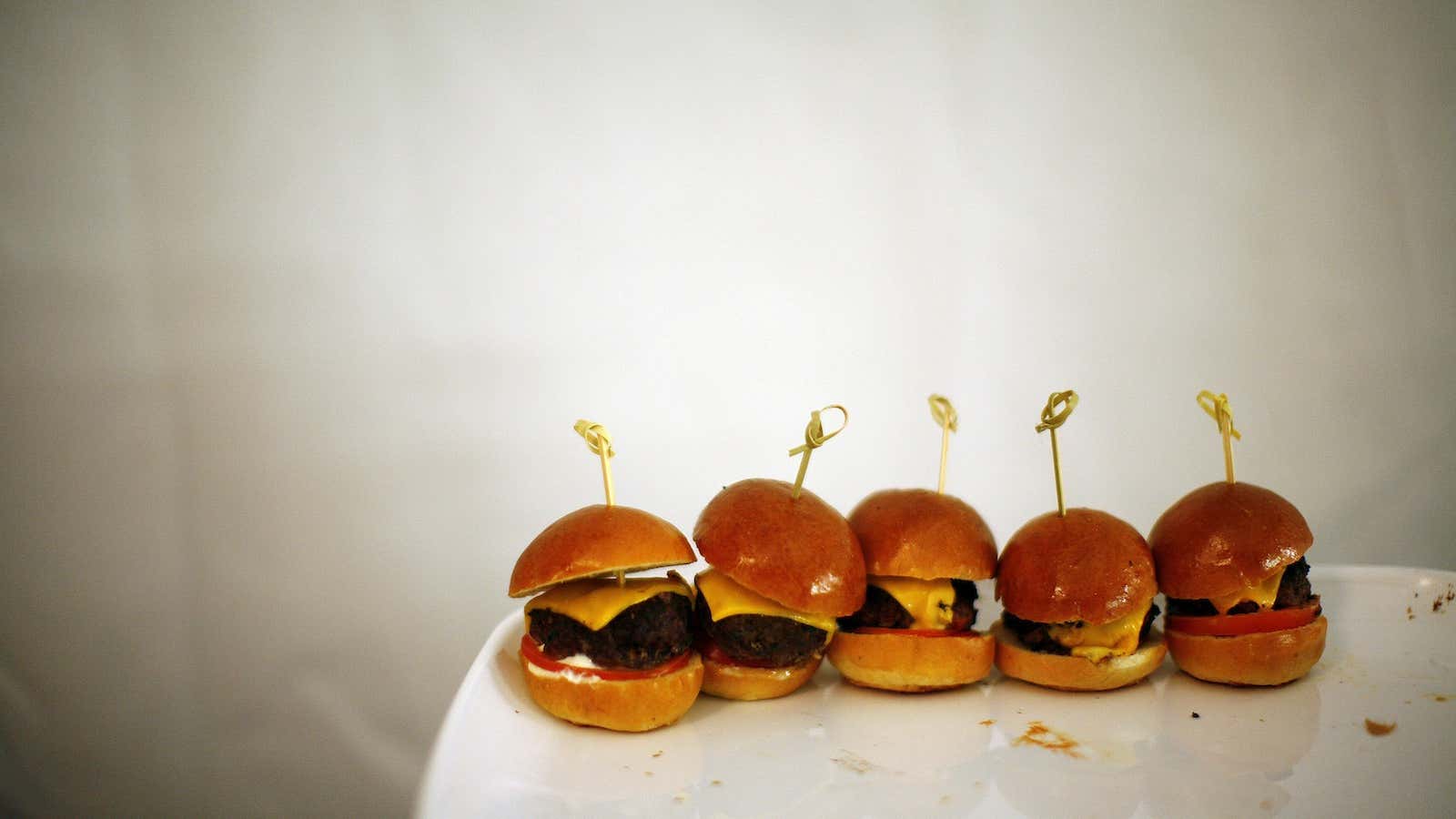Carl’s Jr, Fatburger, Johnny Rocket, Burger King, Wendy’s, Barcelos.
A long list of international burger chains—most of them American—want to take a bite of India’s growing appetite for fast food.
For instance, Carl’s Jr, the Californian premium burger chain, will open its first outlet in New Delhi on August 8. The chain—known for its celebrity brand ambassadors like Kim Kardashian and Paris Hilton—wants to open around 1,000 outlets in India over the next 15 years.
But wooing Indian customers is not going to be particularly easy. For one, these chains have to battle it out with the leader in the segment—McDonald’s. Second, the burger chain industry is just 1.5% of the almost Rs99,000 crore ($15.5 billion) Indian fast-food industry.
There’s also the fact that after years of steady growth, India’s burger market has been stalling lately. The reason, experts say, could be that the target market of these chains is already saturated.
“When McDonald’s entered it was a virgin market with no reference points,” said Ankur Bisen, senior vice-president of retail and consumer products at Technopak, a management consultancy.
“From the demand perspective, there is enough room for new players but the challenge is when the new brands reach same clusters and that may lead to saturation,” Bisen told Quartz in a phone interview.
McDonald’s success
When it entered India nearly two decades ago in 1996, McDonald’s had a first-mover advantage. It localised and served consumers according to the Indian taste palate. Today, it commands about a 99% brand share in India’s burger chain market—almost a monopoly—according to estimates from Euromonitor.
Arvind Singhal, chief executive officer of Technopak, says there are multiple factors for the success of McDonald’s in India.
“These initially included successfully ‘engineering’ the menu for the Indian market with products such as the Aloo Tikki burger, very aggressive opening price points, e.g. the Rs5 soft-serve ice cream cone, and very carefully selected, high-traffic locations to put up the stores in,” Singhal told Quartz in an e-mail.
But even McDonald’s has a lot more scope when it comes to penetrating the Indian market.
“The (quick-service restaurant) market is still very nascent, and there is ample space for more and more brands to come in and coexist,” Amit Jatia, vice chairman of Westlife Development, the company that operates McDonald’s restaurants in western and southern India, told CNBC in April.
Reaching the masses
If these new entrants want to beat McDonald’s, the next area for growth is likely to be in tier 2 and 3 cities. According to a report (pdf) by credit ratings agency CRISIL in 2013, annual spending on quick service restaurants (QSR) by middle-class households in tier 2 cities was expected to increase by 150% to Rs3,750 per year by 2016.
“In comparison, annual spends in tier I cities are expected to increase by more than 60% to about Rs 6,000 by 2015-16,” the report added.
The main factors behind this growth, CRISIL reckons, include the rise in nuclear families and working women, steady growth in incomes, changing lifestyles, and the greater accessibility of QSR outlets.
Still, Technopak’s Bisen argues the challenge is in building scale to expand beyond the top 15 cities.
“The me-too approach in saturated clusters will not work,” said Bisen.
Challenges
Lining up vendors and food sourcing takes time—especially when a new entrant is expanding in smaller towns and cities.
“The operational challenges in India mainly stem from gaps in power, road and storage infrastructure, high turnover of staff, which is detrimental to a business that depends on high consistency and improving delivery performance steadily, as well as the high costs of real estate,” Devangshu Dutta, chief executive of Third Eyesight, a retail consulting firm, told Quartz.
So while the country’s hunger for burgers grows, American chains have a lot more work to do before they can serve up the perfect cheeseburger.
